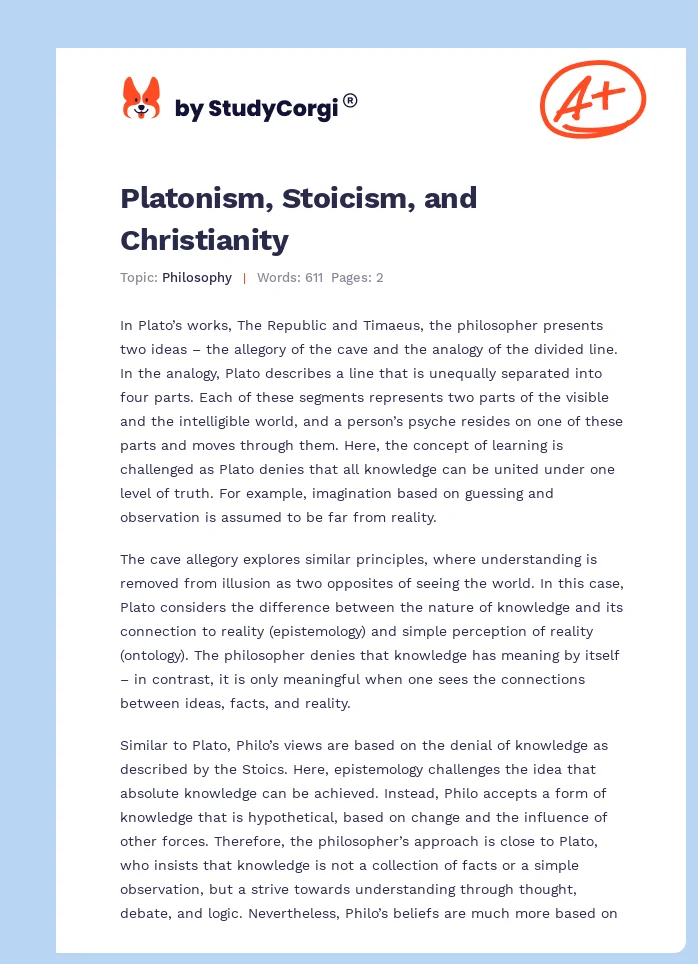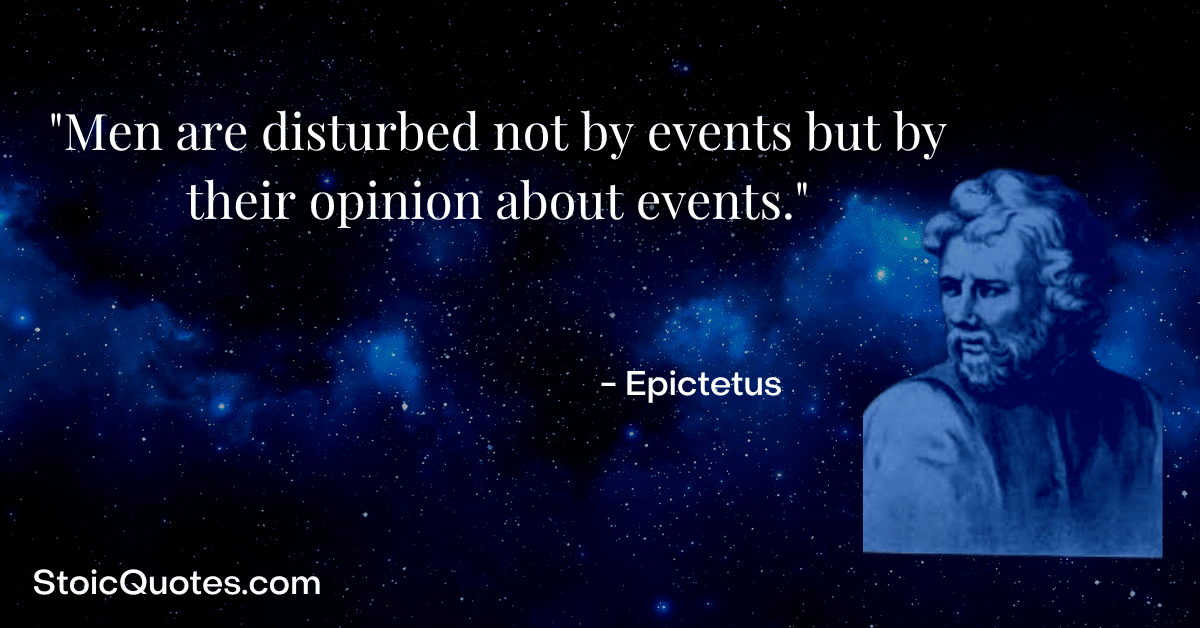
Peering Through Ancient Lenses: How Stoicism and Platonism See the World Differently
A Philosophical Divergence: Spotting the Key Differences in Thought
The ancient Greeks, those clever thinkers, gifted us with a wealth of philosophical schools, each offering its own way to make sense of life, right and wrong, and what it means to be human. Among these intellectual giants stand Stoicism and Platonism. Both aimed at helping people live well, but they had quite different ideas about how to get there. Think of them as two wise old friends with very different advice on how to navigate life’s ups and downs. Let’s explore what makes these two schools of thought so distinct.
Both Platonism and Stoicism sought that elusive state of “eudaimonia,” which we often translate as flourishing or a life well-lived. Yet, the paths they suggested to reach this happy place were quite different. Platonism, heavily influenced by Plato and his teacher Socrates, emphasized a realm of perfect Forms or Ideas — a more real, ideal world that exists beyond what we can touch and see. Imagine it as the perfect version of everything, and our world is just a slightly faded copy.
Stoicism, which came along later with thinkers like Zeno, Epictetus, and Marcus Aurelius, kept its feet firmly on the ground, in the world we experience directly. For Stoics, what’s real is what we can sense. They put virtue — doing the right thing — at the center of a good life and stressed living in harmony with nature and reason. Forget those perfect Forms up in the sky; for a Stoic, what truly counts is how you handle what’s happening right here, right now. It’s about inner strength rather than chasing some distant ideal.
This basic difference in how they saw reality — one looking to a higher plane, the other embracing the world around us — naturally led to different ideas about ethics and how we should live day to day. It’s almost like one school is always checking a cosmic weather report for guidance, while the other is more concerned with whether you remembered your raincoat for the drizzle outside.
What’s Really Real? Forms vs. the Physical World
Where Do We Find Ourselves? Plato’s Cave and the Stoic Marketplace
Plato’s idea of Forms is really the heart of Platonism. He argued that the physical world we live in is just a shadowy, imperfect version of a higher realm of perfect and unchanging Forms. These Forms are the true essence of things — justice itself, pure beauty, absolute goodness, even the perfect chair. So, that comfy chair you’re sitting on? Just a flawed copy of the ideal “Chair-ness” that exists in this other realm. It’s kind of like believing the movie trailer is less real than the actual film.
This idea has big implications. For Platonists, real knowledge doesn’t come from our senses, which can fool us, but from our minds, from using reason to contemplate these Forms. The goal, in a way, is to climb out of the cave of ignorance — our sensory world — and into the light of true understanding in the realm of Forms. It’s a search for ultimate truth that lies beyond what we can immediately see and touch.
Stoicism, in sharp contrast, takes a much more down-to-earth approach. They believed that the only reality we can truly know and interact with is the physical world around us. There’s no separate realm of perfect Forms to strive for. What’s real is what we experience through our senses and understand through logical thinking applied to those experiences. For Stoics, the universe is a rationally ordered place governed by natural laws, and our job is to live in accordance with this natural order.
Think of it this way: a Platonist might spend time pondering the ideal of a courageous act, while a Stoic would focus on acting courageously in the real-life situations they face. One looks to the heavens for inspiration, the other rolls up their sleeves and deals with what’s in front of them. This difference in their understanding of reality shapes their whole philosophical outlook.
Right and Wrong: Ideal Goodness vs. Practical Virtue
How to Live Well: Plato’s Ideals and Stoic Resilience
Given their different views on reality, it’s not surprising that Platonism and Stoicism also have different ideas about ethics. For Platonists, what’s right and wrong is tied to the Form of the Good, the ultimate and most perfect Form. To live a virtuous life means trying to understand and imitate this ideal of goodness. It’s a search for objective moral truths that exist whether we agree with them or not.
This search often involves developing our minds and using reason to grasp these higher ideals. Plato believed that if we truly know what is good, we will naturally do it. So, doing wrong comes from not knowing any better. It’s like having the perfect recipe for a good life; you just need to study it carefully to bake a perfect cake.
Stoicism, on the other hand, puts virtue at the center of everything good. Things like wealth, health, or what others think of us are seen as neither good nor bad in themselves. What really matters is our character and how we respond to what happens to us. The Stoic ideal is to build inner strength, wisdom, fairness, courage, and self-control. These virtues aren’t just abstract ideas but practical skills we need to develop and use every day.
For a Stoic, a good life isn’t about reaching some perfect state based on an external ideal but about living in line with reason and virtue, accepting what we can’t change, and focusing on what we can. It’s about finding inner peace and calm in the middle of life’s chaos by controlling our own judgments and reactions. Think of it as being the captain of your own ship, navigating life’s storms with skill and bravery, no matter the weather.
Our Feelings: Reason in Charge vs. Managing Reactions
Taming What’s Inside: Platonic Harmony and Stoic Self-Control
Both Platonism and Stoicism understood the power of our emotions, but they had different ways of thinking about their role in a good life. Plato, with his idea of the soul having three parts, saw reason as the driver of a chariot pulled by two horses representing our spirited side and our desires. The goal is to have these parts in balance, with reason guiding our passions so they lead to good actions, not bad ones. It’s about training your inner horses to listen to the driver.
For Platonists, uncontrolled emotions can cloud our judgment and lead us away from virtue and understanding the true Forms. So, education and thinking deeply about philosophy are important for creating this inner harmony and making sure reason stays in charge. It’s about reaching a state of inner balance through intellectual and moral growth.
Stoicism takes a more direct and perhaps stricter approach to emotions. While they didn’t say we should have no feelings at all, they stressed the importance of understanding and managing our emotional responses. Stoics believed that emotions like anger, fear, and worry often come from flawed thinking and irrational beliefs. It’s not the events themselves that bother us, but how we interpret them.
The Stoic practice involves actively questioning these irrational beliefs and building emotional resilience through reason and self-control. The goal isn’t to become emotionless but to develop a state of “apatheia,” which doesn’t mean being apathetic but rather being free from excessive or irrational emotions that disturb our inner peace. It’s about being the calm center in a storm, not being shaken by the turbulence around you. Think of it as building an emotional fortress that can withstand whatever life throws at it.
Lasting Impact: Different Paths, Shared Roots
Echoes Through Time: How Plato and the Stoics Still Influence Us
Even though they had different core ideas, both Platonism and Stoicism have had a huge and lasting impact on how we think in the West, and they still offer valuable insights today. Platonism, with its focus on abstract ideals and the power of reason, greatly influenced later philosophical movements, including Neoplatonism and various forms of Christian thought. Its emphasis on seeking truth and the importance of intellectual inquiry remains a key part of Western education.
Thinkers like Augustine and Plotinus borrowed heavily from Platonic ideas, shaping religious and philosophical landscapes for centuries. The concept of a higher reality, the idea that our souls live on, and the importance of reason in understanding the world all owe a lot to Plato’s lasting influence. It’s like the original blueprint that many later builders used, even if they ended up constructing very different buildings.
Stoicism, with its practical focus on ethics and self-control, has also had periods of great influence throughout history, and it’s even seeing a comeback in popularity recently. Its emphasis on virtue, resilience, and accepting what we can’t control has resonated with people looking for practical ways to deal with life’s challenges. From Roman emperors like Marcus Aurelius to modern business leaders and therapists, the Stoic principles of reason, virtue, and living in accordance with nature continue to offer valuable guidance.
In the end, while Stoicism and Platonism offer different philosophical paths, they both come from the same ancient Greek intellectual tradition and share a common goal: to understand the world and live a meaningful and fulfilling life. Looking at their differences not only helps us understand ancient thought better but also gives us a richer understanding of the different ways we can approach the big questions of human existence. So, whether you’re drawn to the ideal world of Forms or the practical wisdom of virtue, both schools offer valuable lessons for your own journey of discovery.
Frequently Asked Questions (FAQ)
Common Questions About Stoicism and Platonism
- Q: So, one is all about perfect ideas, and the other is about dealing with what’s actually happening? Is that the main point?
- A: You’ve definitely hit on the main contrast! Platonism does indeed center on a realm of perfect, unchanging Forms as the truest reality, while Stoicism is very much about the present moment and how we respond to the physical world. However, both are complex systems with more to them than just this basic difference. Platonism also deals with the world we see (though as a less perfect version), and Stoicism isn’t just about toughing it out; it involves reason, virtue, and understanding the natural order of things.
- Q: Which philosophy should I choose if I want to be really wise and happy?
- A: That’s the big question everyone wonders! There’s no single “right” philosophy; it really depends on what clicks with you and your own experiences. Platonism might appeal to those who love deep intellectual exploration and believe in a higher truth. Stoicism might be more appealing to those who want practical tools for handling everyday difficulties and finding inner peace. Maybe exploring both a bit is the best approach? Think of it as trying different flavors of wisdom!
- Q: Did these philosophers ever get together and debate? Like, Socrates and Zeno having a philosophical showdown?
- A: That would have been an amazing intellectual clash to witness! However, in terms of when they lived, Socrates came before Zeno, who founded Stoicism, by quite a while. Plato was Socrates’ student, so they were around at the same time. While there were definitely intellectual exchanges and influences between different philosophical schools in ancient Greece, a direct debate between Socrates and Zeno isn’t something that would have happened historically. One can only imagine the insightful arguments!

Platonism, Stoicism, And Christianity Free Essay Example

Aristotle (stanford Encyclopedia Of Philosophy)

Platonism Vs Stoicism R/cynic_et_stoic_memes

Stoicism Vs. Buddhism What’s The Difference?

